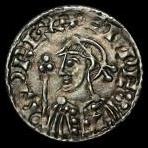








Designed by Nigel G Wilcox






The Paragon Of Metal Detecting
Powered By Sispro1
British Sterling Currency - Numismatics,
Penny
For Reference ONLY
Everything For The Detectorist
Penny
Edward the Confessor 1042-1066 AD Silver Penny
Royal Monarchy
Copyright © All Rights Reserved by Nigel G Wilcox · · E-Mail: ngwilcox100@gmail.com
INFORMATION - DATA
Pages
Heavy issue, London, +AELFGAR ON LVNDE, 1.66g - Hammered
Estimated Value £600 (2018) London
Heavy Issue
Estimated Value £600 (2018) London
Heavy Issue
Stamford, moneyer Leofwine, +EDPERD RE, rev. LEOFPINE ON ST, 1.05g - Hammered - Estimated Value £340 (2018) Stamford
Sovereign eagles type
York mint, moneyer SCULA, EDPARD RX ANGLOX, rev. SCVLA ON EOFERPIC, annulets in second and fourth quarter, 1.34g, Hammered Estimated Value £550 (2018) York
York mint, moneyer SCULA, EDPARD RX ANGLOX, rev. SCVLA ON EOFERPIC, annulets in second and fourth quarter, 1.34g, Hammered Estimated Value £550 (2018) York






We do NOT buy or sell coins


London, moneyer Wulfred, EDPERD: REX A:, rev. PVLFRED ON LVN, 1.18g Hammered - Estimated Value £1650 (2018)


Pyramids type, York
Moneyer Scula, rev. +SCVLΛ ON EOFER, 1.25g,Hammered
Estimated Value £550
Moneyer Scula, rev. +SCVLΛ ON EOFER, 1.25g,Hammered
Estimated Value £550
Edward the Confessor[a] (Old English: Ēadƿeard Andettere [æːɑdwæɑrˠd ɑndetere], Latin: Eduardus Confessor Classical Latin: [ɛ.dʊˈar.dʊs kɔ̃ˈfɛs.sɔr]; c. 1003 - 5 January 1066), also known as Saint Edward the Confessor, was among the last Anglo-Saxon kings of England. Usually considered the last king of the House of Wessex, he ruled from 1042 to 1066.
The son of Æthelred the Unready and Emma of Normandy, Edward succeeded Cnut the Great's son - and his own half brother - Harthacnut, restoring the rule of the House of Wessex after the period of Danish rule since Cnut (better known as Canute) conquered England in 1016. When Edward died in 1066, he was succeeded by Harold Godwinson, who was defeated and killed in the same year by the Normans under William the Conqueror at the Battle of Hastings. Edgar the Ætheling, who was of the House of Wessex, was proclaimed king after the Battle of Hastings in 1066, but never ruled and was deposed after about eight weeks.
Historians disagree about Edward's fairly long (24-year) reign. His nickname reflects the traditional image of him as unworldly and pious. Confessor reflects his reputation as a saint who did not suffer martyrdom, as opposed to King Edward the Martyr. Some portray Edward the Confessor's reign as leading to the disintegration of royal power in England and the advance in power of the House of Godwin, due to the infighting that began after his heirless death. Biographers Frank Barlow and Peter Rex, on the other hand, portray Edward as a successful king, one who was energetic, resourceful and sometimes ruthless; they argue that the Norman conquest shortly after his death tarnished his image. However, Richard Mortimer argues that the return of the Godwins from exile in 1052 "meant the effective end of his exercise of power", citing Edward's reduced activity as implying "a withdrawal from affairs".
About a century later, in 1161, Pope Alexander III canonised the late king. Saint Edward was one of England's national saints until King Edward III adopted Saint George as the national patron saint in about 1350. Saint Edward's feast day is 13 October, celebrated by both the Church of England and the Catholic Church in England and Wales
The son of Æthelred the Unready and Emma of Normandy, Edward succeeded Cnut the Great's son - and his own half brother - Harthacnut, restoring the rule of the House of Wessex after the period of Danish rule since Cnut (better known as Canute) conquered England in 1016. When Edward died in 1066, he was succeeded by Harold Godwinson, who was defeated and killed in the same year by the Normans under William the Conqueror at the Battle of Hastings. Edgar the Ætheling, who was of the House of Wessex, was proclaimed king after the Battle of Hastings in 1066, but never ruled and was deposed after about eight weeks.
Historians disagree about Edward's fairly long (24-year) reign. His nickname reflects the traditional image of him as unworldly and pious. Confessor reflects his reputation as a saint who did not suffer martyrdom, as opposed to King Edward the Martyr. Some portray Edward the Confessor's reign as leading to the disintegration of royal power in England and the advance in power of the House of Godwin, due to the infighting that began after his heirless death. Biographers Frank Barlow and Peter Rex, on the other hand, portray Edward as a successful king, one who was energetic, resourceful and sometimes ruthless; they argue that the Norman conquest shortly after his death tarnished his image. However, Richard Mortimer argues that the return of the Godwins from exile in 1052 "meant the effective end of his exercise of power", citing Edward's reduced activity as implying "a withdrawal from affairs".
About a century later, in 1161, Pope Alexander III canonised the late king. Saint Edward was one of England's national saints until King Edward III adopted Saint George as the national patron saint in about 1350. Saint Edward's feast day is 13 October, celebrated by both the Church of England and the Catholic Church in England and Wales

Edward the Confessor
Main Coin Menu

VIEW ALL MENUS
Member NCMD
6. S. Menu
























